2013 Environmental Merit Award Recipients
- Dedication
- Welcome
- Lifetime Achievement
- Individual
- Environmental, Community, Academia, & Nonprofit
- Governmental
- Business, Industry, Trade or Professional
- Federal Green Challenge
- President's Environmental Youth Award (PEYA)
- Special Thanks

Dedication
Today's program is dedicated to everyone impacted by the Boston Marathon bombing on April 15, 2013 – including those whose lives were lost and the many who were physically and emotionally harmed. Also, our gratitude goes out to the first responders, members of the law enforcement community, and the ordinary citizens who so ably and bravely assisted on that day and the difficult days that followed.
Welcome
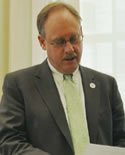
Welcome to the 2013 Environmental Merit Awards Ceremony
Congratulations to all of our 2013 Environmental Merit Award Recipients, who are being recognized for their environmental stewardship, activism and support.
This past year EPA New England has worked to fine tune our efforts to find sustainable solutions to environmental challenges in New England. EPA has been coordinating across the federal government with HUD and DOT to promote sustainable and healthy growth in urban places. We have also been focused on Climate Change adaptation and mitigation across the region.
Today's honorees are huge contributors to our shared environmental successes. Your work is something the staff at EPA New England is very proud of and we all thank you for taking initiative in so many different areas. Whether you're finding innovative ways to safeguard our water resources or conserving the energy our communities use each day, each of you has advanced our mission to protect human health and the environment.
Congratulations to all of today's Environmental Merit Award winners. Keep up the good work.
Sincerely,
Curt Spalding
Regional Administrator, EPA New England
Lifetime Achievement

Russell L. Brenneman
In 1967 Russell Brenneman wrote the book, "Private Approaches to the Preservation of Open Land," published by The Conservation and Research Foundation. This book made it easier to put conservation easement regulations into codes that could become laws. Brenneman co-chaired the Conn. League of Conservation Voters, crafted legislation and provided legal counsel for the preservation of many tracts of land. He also teaches environmental law, and has passed his knowledge of and devotion to the environment to the next generation.
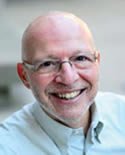
Anthony D. Cortese
Anthony Cortese is a senior fellow of Second Nature, an organization based in Boston and committed to promoting sustainability through higher education. Cortese co-founded Second Nature with then-US Sen. John Kerry of Massachusetts; Kerry's wife, Teresa Heinz Kerry; and environmentalist and educator Bruce Droste. As president of Second Nature from 1993 to 2012, Cortese organized the American College & University Presidents' Climate Commitment and co-founded both the Association for the Advancement of Sustainability in Higher Education and the Higher Education Association Sustainability Consortium. Cortese was formerly the commissioner of the Massachusetts Department of Environmental Protection and was the first dean of environmental programs at Tufts University. At Tufts, he founded the Tufts Environmental Literacy Institute in 1989 that helped integrate environmental and sustainability perspectives into more than 175 courses.
Cortese also organized the effort that resulted in the internationally acclaimed Talloires Declaration of University Leaders for a Sustainable Future in 1990, now signed by more than 350 presidents and chancellors in more than 50 countries. Cortese is a frequent consultant on sustainability to higher education, industry and non-profit organizations.
Cortese is a trustee of Tufts University and Green Mountain College and a fellow of the American Association for the Advancement of Science. He has been actively engaged in large system sustainability challenges for 40 years. Cortese has bachelor's and master's degrees from Tufts University in civil and environmental engineering, a doctorate in environmental health from the Harvard School of Public Health, and an honorary doctorate from Allegheny College in Pennsylvania and the University of Maine in Presque Isle.

Berkeley W. Cue, Jr.
Berkeley Cue has accomplished a great deal in the industrial application of green chemistry over the last 12 years. Cue's work was based in Ledyard, Conn., before he moved in 2012 to Nottingham, NH, changing his focus to New England. Cue got involved in green chemistry in the late 1990s, when the pharmaceutical industry had only isolated pockets of green chemistry practitioners at a few companies. As an employee of Pfizer and a member of the scientific advisory board at the University of Massachusetts-Boston, Cue and another professor discussed the need for green chemistry to become a major initiative at Pfizer's Groton, Conn., laboratories. A formal program began in 2000, which rapidly infected all aspects of chemistry at Pfizer. Between 2000 and 2003 this initiative spread to major research & development and manufacturing sites around the world. By the time Cue retired from Pfizer in 2004, the company was recognized globally as a green chemistry leader.
After retiring, Cue became a governing board member of the American Chemical Society's Green Chemistry Institute. He used the Pfizer program as a model and, collaborating with the institute's director, established and led the institute's Pharmaceutical Roundtable. From a core group of three companies in 2005, including Lilly, Merck and Pfizer, this roundtable has grown to 18 companies representing two-thirds of the global pharmaceutical sales. Cue also was a founding member of the Green Chemistry and Commerce Council based in the Lowell Center for Sustainable Production. Most recently Cue has focused his green chemistry efforts in New England in three areas. He was appointed adjunct professor in the UMass-Boston Chemistry Department where he co-edited a green chemistry reference book, "Green Techniques for Organic Synthesis and Medicinal Chemistry." He is advisor to UMass-Boston's Center for Sustainable Enterprise and Regional Competitiveness. And finally, Cue has helped EPA New England's green chemistry programs through his involvement in business and by helping design a K-12 green chemistry program.
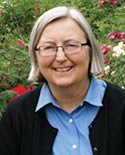
Tessa Gutowski
During more than 30 years with the state, Tessa Gutowski has worked on many projects that have benefited residents of Connecticut and the environment. As an employee of the Department of Energy and Environmental Protection, Gutowski developed Connecticut's Debris Disaster Management Plan, which allowed Connecticut to effectively address the large quantities of debris from storms Irene, Sandy and Charlotte over the last three years. Gutowski made sure the solid waste team understood the plan and was available to help staff put the plan into place during the storms, even sleeping on the floor at work to be available during the events. The value of Gutowski's plan was evident when New Jersey and New York adopted it as the basis for their response after storm Sandy. Gutowski also developed the state's Solid Waste Management Plan, which has become the backbone of Connecticut's waste management efforts and a lasting example for other states.
Gutowski's attention to quality have kept data up to EPA standards which helps the state get federal grants and assures the integrity of department programs. In 2012, Gutowski transformed the open burning program to reduce the harm done by burning to air quality. Off work, Gutowski has served on her local wetlands commission in Willington, Conn., and volunteered for many No Child Left Inside events. Gutowski is described as "a quiet and steady hero" with "superb knowledge of environmental issues, the innovation necessary to tackle problems effectively … and the collaborative ability to spread her successes."

Kevin Mallory
Kevin Mallory, transportation director of the Portland Public Schools, has made the Portland Public Schools bus fleet greener. At the same time he has raised awareness in the community about the benefits of reducing diesel exhaust emissions. When first alerted to the health concern of diesel exhaust, Mallory launched a campaign to reduce exposure to harmful school bus diesel emissions. The Portland district was the first school district in the state to establish and enforce a no-idling policy for school buses. In 2004, it was one of the first schools in the nation to apply to EPA's Clean School Bus USA grant to retrofit 21 school buses with pollution control equipment. It expanded the school bus initiative to private vehicles around school buildings by posting Clean Air Zone signs and worked with city leaders to designate the city as a "Clean Air Zone," extending reduced idling policies beyond schools.
In 2006, the Portland school district began operating three compressed natural gas school buses and by 2012, it had received funding to bring the fleet to 14 natural gas school buses, the largest such school bus fleet in New England. Portland Public Schools has demonstrated exemplary stewardship for the environment and protecting public health and provides a strong model of success for other communities.
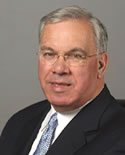
Thomas M. Menino
Mayor of Boston
As mayor of Boston for 20 years, Thomas M. Menino has dedicated his time and energy to making Boston a better place to live, work and visit. He has been determined to revitalize Boston's neighborhoods, promote a healthy lifestyle for all city residents, spur business growth, and strengthen partnerships between the private and public sectors—all while making Boston a more sustainable community now and into the future. From 1995's Environmental Blueprint to 2011's A Climate of Progress, Mayor Menino has set ambitious goals to reduce greenhouse gas emissions and make Boston a national leader in climate action. The city met its 2012 reduction goal ahead of schedule and is on track to meeting the 2020 city-wide goal. Such accomplishments are a result of Mayor Menino's strong environmental agenda. In 2007 Boston became first in the nation to adopt a green building standard for large private developments. His latest green building accomplishment was an ordinance that requires large- and medium-sized buildings to report their energy and water use to the city, which passed last month.
Mayor Menino has also put Boston on course to being the most climate prepared and resilient city in the country with the Climate Ready Boston initiatives he announced in February. Mayor Menino has made it easier for all Bostonians to be more sustainable with such programs as: Renew Boston, which has connected almost 5,000 residents with weatherization services; single-stream recycling; Complete Streets, which has taken the mantra of "the car is no longer king" and made Boston a great biking and walking city with new bike lanes, Hubway Bikeshare and new streetscapes designed for walking and biking; and most recently, Greenovate Boston, which connects all residents and businesses to Boston's suite of sustainability services and resources. Over his 20 years of leadership, Mayor Menino has established Boston as a national leader in urban sustainability, to the benefit of current and future generations for the years to come.
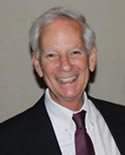
Scott W. Nixon
(posthumous)
Scott Nixon's main contribution to the environment in Rhode Island was in-depth research focused on Narragansett Bay. He and a grad student developed a mathematical model defining how the bay worked, which was published in 1981. Thirty years later, in 2008, Nixon worked with students and technicians from his lab to update public knowledge about the bay with an extensive chapter on inputs of nitrogen and phosphorus over time. Nixon carried out distinguished marine ecological research and was an advocate for ecosystem-level thinking and management for both the local and international scientific community for over four decades before his unexpected death in May 2012.
Nixon first arrived at the Graduate School of Oceanography at the University of Rhode Island in 1969, just before he got his doctorate in botany from the University of North Carolina at Chapel Hill. After that he did research, taught and guided 39 graduate students. In 1984 Nixon became coordinator of the RI Sea Grant College Program and in 1986 became its director, a job he kept until 2000. Nixon was respected worldwide for his knowledge on how coastal and estuarine ecosystems work. He investigated and published findings on ecosystems as far away as Kenya and Malaysia and as close as Rhode Island. He studied or served on the panels investigating ecosystems and their problems that were as varied as the lagoons of Venice, restoration of the Everglades, algal blooms in the Potomac Estuary, the fisheries of Egypt's Nile, and nutrients in the Massachusetts Bay Wastewater Outfall.
Through his work and his words, Scott encouraged good environmental practices and decisions throughout his career.

Marc J. Taylor, M.D.
(posthumous)
Marc Taylor worked on the health of America's waterways and the ecological systems they are a part of. His focus was Connecticut's Pomperaug River Watershed. A physician, medical educator, and national leader in water conservation, Taylor was nominated posthumously for his contribution late in his life in co-founding Connecticut's Pomperaug River Watershed Coalition, an innovative model for local water conservation, as well as for his leadership in pursuing clean, plentiful water for all. Taylor first became concerned about water diversions and other threats to the Pomperaug River in 1999. He mobilized citizens and leaders and co-founded the coalition with three initial goals: to study the watershed and the factors affecting its health; to share findings with the community; and to establish a coalition that could influence policies and conservation practices. With Taylor as chair for nine years, the coalition has done multiple scientific studies that have brought new understanding of the watershed and new policies for river protection. It has also created tools to monitor water and habitat and has brought crucial scientific data to decision-makers while educating and involving residents, organizations, businesses and town officials.
Taylor's work with the Coalition led him to get involved with other organizations. He was chair of River Network in Portland, Oregon, which supports 2000 grass-roots water organizations across the country; a board member of the Connecticut Rivers Alliance, the Housatonic Valley Association, and the Southbury Land Trust. He nurtured connections between groups. Without fanfare or pay, Taylor was an influential and inspiring leader to those working to safeguard our water.
Individual
John V. Fernandes and Richard T. Moore
Boston, Mass.
New England's surface waters are increasingly choked by plants whose growth are fueled by polluted stormwater. Many once clear ponds and rivers now resemble putting greens and lush meadows, tough places for fish to flourish. A study of the Charles River indicated that municipalities need to cut discharge of phosphorus from their storm drains in half if the river is to be healthy. Looking for ways to control phosphorus in stormwater runoff, State Rep. John Fernandes of Milton and State Sen. Richard T. Moore of Uxbridge, worked with EPA to draft a law that would reduce phosphorus in fertilizers and get it through the state Legislature to the governor. They pulled in the Massachusetts Municipal Association, Massachusetts Audubon Society and the 495/ MetroWest Partnership of businesses.
Signed by Governor Patrick, the law will allow for the use of phosphorus in fertilizer only if a soil test indicates it is necessary. And this fertilizer will only be allowed for establishing new lawns. Finally, vendors will have to display these fertilizers separately and post signs specifying when and where they can be used. These two lawmakers came up with a simple, fast and smart way to reduce phosphorus loads to surface waters statewide. They deserve the recognition for their leadership role as Phosphorus Busters.
Peter Hinrichs
YouthBuild Boston, Inc., Roxbury, Mass.
Peter Hinrichs, formerly with YouthBuild Boston, Roxbury, currently runs a horticultural program at the Learning Prep School in Newton Massachusetts. During the time he worked at YouthBuild Boston, he was a key figure in EPA New England's efforts to promote rain gardens and reduce stormwater pollution. Hinrichs has worked with the agency over the past year to train youth and neighborhood groups to install rain gardens in Boston and around New England. Hinrichs collaborated with EPA New England as well as the Boston Greenway Conservancy and recently began working with staff from Springfield to plan a rain garden training for that community, working with high school teachers and students.
Hinrichs also led students from YouthBuild's Boston and Lowell programs to put in more than 300 plants for a rain garden along the driveway of EPA's New England Regional Laboratory in North Chelmsford last fall. This was part of EPA's Soak Up the Rain Challenge to reduce stormwater impacts in New England. Hinrichs also developed the design and supervised installation of a rain garden at Dewey Square in Boston as part of an Earth Day event. Over the past 20 years, Peter Hinrichs has used education as the cornerstone of his career in landscape design and horticulture. He has used this approach in his work in public horticulture, landscape construction and more recently workforce development to work with people of all backgrounds and ages to educate them about the importance of the environment as it relates to everyday life. Through his work, Hinrichs hopes to use cutting edge and practical learning tools in horticulture, design and the environment to foster the future stewards of the environment.
Stephen Landry
NH Department of Environmental Services, Concord, NH
Steve Landry, who has worked for the NH Department of Environmental Services for more than 20 years, has succeeded because of his dedication and tenacity, but also because of his talents in making people feel heard and creating a positive atmosphere. Landry, whose current position is Merrimack Watershed Supervisor, worked countless hours, for instance, to educate the city officials and the public on issues related to the Maxwell Pond Dam removal. His calm approach and well-organized thoughts, mixed with just the perfect amount of wit, create a conversation. His presentations target a specific audience and address almost every concern. He gives listeners a better understanding of issues and lets them feel heard. According to the manager of the states' Dam Removal and River Restoration Program, the Maxwell Pond Dam removal is still referenced as a case study for future projects. This site was featured in the American Rivers most recent DVD titled, "Restoring America's Rivers: Preparing for the Future," which has helped individuals and dam owners contemplating dam removal.
During 2012, Steve worked on several dam removals as well as removing three dams in Manchester that don't meet the state dam definition but are barriers to fish and impair water quality. Landry's leadership, tenacity and dedication are apparent in every project he is associated with. His commitment to the environment extends outside of the workplace because he genuinely believes in the protection of our environment for this generation and future generations.
Patrick Santoso
UNH Technology Transfer Center, Durham, NH
More than 40 New Hampshire waters are listed as impaired by chlorides from salt put on roads and parking lots. About half of the salt loading is from private parking lots and driveways. In the past, state and municipal road crews have had access to training programs, but there was nothing available to help private entities. The University of New Hampshire, led by Patrick Santoso of the UNH Technology Transfer Center, stepped into this void and created a voluntary training and certification program, called Green SnowPro. After participating in the I-93 Salt Reduction Work Group to learn about problems, Santoso designed the program. Since the first courses were offered in 2011, more than 300 people have been certified as Green SnowPros. Salt applicators have said that they made changes to their practices based on the training and that they are using less salt as a result. To quantify salt reduction, Santoso and his colleagues at UNH developed a web-based salt accounting system, the first of its kind in the nation. Santoso was also key in developing salt reduction plans for the four municipalities in the I-93 watersheds. His leadership has directly led to less salt use by these towns.
Linda Schier
Acton Wakefield Watersheds Alliance, Union, NH
Linda Schier brings people together with a persistence and devotion to water quality protection and restoration that are inspirational to those who work with her. Under Schier's direction, the Acton Wakefield Watersheds Alliance was founded in 2005 at the headwaters of the Salmon Falls River, which is the source of drinking water for 47,000 people in Maine and New Hampshire. One of Schier's first projects was to create the Youth Conservation Corps, which hires local students to install erosion controls and reduce impacts from stormwater pollution. These controls are installed on shoreland properties of cooperating land owners. The Corps has installed close to 800 Best Management Practices (BMPs) while providing green jobs and work experience for 10 youths each summer. In 2012 alone, the group installed 125 erosion controls which stopped 48 tons of sediment and 40 pounds of phosphorus from going into local waterways. This success was based on Schier's efforts from 2008-2010 when she secured funds and directed development of the Salmon Falls Headwater Lakes Management Plan. This plan created a water quality picture of the five lakes and ponds that are approaching critical thresholds of phosphorous. Schier inspired more than 100 citizens to help identify 491 sites that contribute excess phosphorus to the project waterways. Schier works with local schools and lake associations in Maine and New Hampshire to protect local waterways. Communities and their water resources have benefited from her devotion and persistence.
Environmental, Community, Academia, & Nonprofit
American Lung Association of the Northeast
Waltham, Mass.
The American Lung Association of the Northeast is committed to the goal of tighter air quality standards leading to improved lung health and more lives saved. Over the past four years this organization has successfully put in place three significant programs to update woodstoves in Western Massachusetts and Southern New Hampshire. These programs give woodstove owners a chance to exchange dirtier, less efficient woodstoves for new EPA-certified woodstoves, or pellet or gas stoves. Half of the more than 300 stoves replaced were at least 40 years old. Working with retailers, the Lung Association made sure old woodstoves were destroyed and replacement units were professionally installed, which assured code compliance and minimized the danger of a fire.
These woodstove programs improve air quality and provide an economic benefit to retailers. With each program, demand for replacing old woodstoves was so great, funds were exhausted and the programs closed in less than a month. The three 2012 programs cost $500,000. The American Lung Association of the Northeast is providing expert consultations to potential programs throughout the country that see these Woodstove Changeout Programs as models.
Beth Israel Deaconess Medical Center
Boston, Mass.
Hospitals must care for patients without creating new health or environmental problems. Beth Israel Deaconess Medical Center has taken this challenge seriously for 15 years through a variety of initiatives. Staff have learned about the dangers of mercury and worked to remove it from the medical center. A full-time energy manager was added seven years ago and four years ago, a Sustainability Committee was set up that drafted a plan that is being put in place by a full-time sustainability coordinator. That committee has seen progress in several areas. The center's recycling rate has jumped from 20 to 33 percent thanks to a scrap metal program, single stream recycling, regular donations of surplus furniture and medical supplies, increased battery and electronic waste recycling and composting. The hospital has reduced total waste by switching to reusable containers and removing items not used from prepackaged operating room kits. It reduced paper consumption and junk mail, and promoted reusable mugs so their use jumped from 1 to 25 percent of cafeteria drink sales.
Beth Israel also committed to reducing energy consumption by 25 percent by 2020. So far it is has seen an 8.8 percent reduction in water use, close to its 2015 goal of 8 percent. The hospital replaced its public safety car with a hybrid, then worked with neighboring hospitals to consolidate shuttles, which led to a 30 percent drop in fuel consumption. The hospital also promoted the benefits of green commuting, which led to a drop in employees driving alone from 43 to 36 percent over three years. Now Beth Israel is working with neighboring institutions to increase the carpool rate in the Longwood Medical area.
Cary Medical Center Safe Sharps Disposal Program
Caribou, Maine
In 2010 a medical technologist at Cary Medical Center saw piles of sharps – or needles – collected in the apartment of an elderly woman with a diabetic cat. Motivated to research the issue of sharps disposal, Lisa Prescott approached colleagues and hospital administration with ideas on community education and disposal options. This led to the Cary Committee for Community Needle Collection and ultimately a successful sharps disposal program. Less than three years later, Aroostook County, which has one of Maine's highest levels of diabetes, has a working disposal system to protect citizens from hazards associated with used medical sharps.
The Cary Medical Center Safe Sharps Disposal Program began in 2011. A drop-off sharps disposal kiosk was set up in the Caribou police station. A second kiosk was added in Presque Isle soon after and in 2012, with funding from the state, kiosks were installed into four other local police stations. State law allows medical sharps in hard plastic containers in household trash, but the Cary program allows for a separate disposal system. This educates the public on the dangers of sharps and protects solid waste personnel. It also encourages residents to dispose of sharps if they worry about safety issues in regular disposal. A year after the first kiosk in Caribou and only five months after the Presque Isle kiosk, more than two tons of sharps had been collected at just those two sites. This number is expected to grow exponentially.
Gulf of Maine Institute
Saco, Maine
The Gulf of Maine Institute has been developing citizen stewards of the environment for more than a decade. The institute's mission is "to touch, move and inspire young people, in partnership with adults, to lead in stewardship of the Gulf of Maine and its watershed." The institute was founded in response to pollution, loss of resources and overall lack of knowledge of the watershed. Over the years, the Gulf of Maine Institute has led teams of teenagers with adult mentors in projects related to their immediate watershed. The teams meet annually to work together on themes such as climate change and water quality, as well as to share ideas, challenges and successes.
The teams help other environmental organizations like Coastal Zone Management, Mass Audubon or others by doing quantitative environmental science, such as water quality sampling and reporting on invasive species in the watershed. Equally important, the Gulf of Maine Institute provides its students and alumni with the scientific research and problem-solving tools to advance the knowledge of and advocacy for environmental issues throughout the Gulf of Maine watershed.
Junior Win Team of Westerly Innovations Network
Westerly, RI
Vanessa Bertsch, Taylor Fiore-Chettiar, Isaac Kaufman, Cassandra Lin, John Perino, Miles Temel
Students from Westerly, Rhode Island, in 2008 launched a project to recycle used cooking oil by turning it into biodiesel to help heat the homes of needy people. The Warwick Sewer Authority joined students, who were part of the Westerly Innovations Network, to launch the Turn Grease into Fuel or TGIF Program in late 2010. In its first year, TGIF diverted more than 1,450 gallons of used cooking oil from the waste stream and local sewer system. In its second year, students collected 1,835 gallons of used cooking oil from businesses, a fire station and an elementary school. In 2012, $1.1 million from the sale of biodiesel fuel was donated to the City's Department of Human Services for the local emergency heating assistance program.
Sherman Elementary School, the collection site for used oil, collected 675 gallons of grease and earned $593 for the Parent-Teacher Organization. So far, the Junior WIN Team has collected 130,000 gallons of used cooking oil and donated $81,000 for the purchase of biofuel. This has amounted to 21,000 gallons of BioHeat distributed to 210 homes. Recently, the team successfully promoted the use of biodiesel blends in Westerly school buses. The Junior WIN Team hopes to find more collection sites in Warwick. As a result of publicity, T.G.I.F. has expanded into Providence and South Kingstown.
Northwest Conservation District
Torrington, Conn.
The Northwest Conservation District serves 34 communities in Northwest Connecticut. Its main function is to conserve local natural resources through a wide variety of technical services and educational programs. The district focuses on watershed and open space protection, low impact development techniques, sustainable resource and energy use, and promoting ecosystem planning. The organization also offers a variety of Geographic Information Systems based mapping solutions to help towns, organizations, and individuals to plan projects and make decisions.
Among the challenges addressed by the Northwest Conservation District are drinking water and aquifer protection, wetland protection and restoration, aquatic resource protection through low impact development measures, as well as open space and farmland preservation. As one example of the work the organization has done, the Northwest Conservation District teamed up with the Farmington River Watershed Association to help build a rain garden and bioswale at a wastewater treatment plant in Winchester and at Crystal Lake filtration facility. Rain gardens and bioswales are low impact development measures that can reduce runoff and clean water. Volunteers who helped build the bioswale which was converted from a standard rock-lined swale, planted various shrubs, including blueberries and other native species. The plants will now attract more native wildlife at the same time they filter pollutants.
Second Nature, Inc.
Boston, Mass.
Since 1993, Second Nature has worked to create an environmentally sustainable society by transforming higher education. The Boston-based organization has supported senior college and university leaders in making sustainable living a foundation in higher education, where they hoped to reach future leaders. The idea was that if higher education institutions operate as communities that teach, research, and model environmental sustainability, then the graduates will transmit those values in workplaces and home lives, propelling society toward a sustainable future.
In 2007, Second Nature initiated the American College & University Presidents' Climate Commitment, which has involved hundreds of campuses nationwide. As a result, higher education was the first U.S. sector with a coherent, critical mass publicly committed to climate neutrality. In New England, 92 institutions representing 36 percent of the colleges and universities in the region have signed on. This represents 530,817 students and 138 million square feet of built environment. Nationwide, 670 institutions have joined the commitment, representing 6 million students. More than 30 of those who joined have set a climate neutrality date within the next 20 years. Three of them - all three in New England - have already reached the goal of climate neutrality. Some 20 New England institutions together saved $29.5 million in energy costs. The hundreds of institutions that are part of this commitment are generating innovative approaches to addressing climate change. Second Nature recognizes the leaders among them through the annual Climate Leadership Awards. Since Second Nature initiated the awards in 2010, eight New England colleges and universities have been recipients. Since its launch in 2007, international higher education representatives have approached Second Nature about expanding the model beyond the U.S. In Scotland, Peru, Australia and Canada, programs have been crafted with Second Nature work as a model.
Representatives of Bunker Hill Community College in Boston; Colby College of Waterville, Maine; and The University of Maine, are all here today representing the New England signatories of the American College & University Presidents' Climate Commitment.
Shaping the Future of Your Community Program, Mass Audubon
Lincoln, Mass.
In the past decade, more than 8,000 acres of forest and farmland was lost to residential development each year. These development patterns are unsustainable environmentally, socially, and economically. The need to improve land use is especially urgent in light of high-intensity storms and other climate change-related impacts. Mass Audubon's Shaping the Future of Your Community Program helps communities understand and use tools for sustainable development. The program is based on the idea that economic development and conservation go hand-in-hand, rather than being in conflict. Local and regional plans identify targeted areas for development, such as existing town centers and other areas with infrastructure, and priority areas for conservation. The Shaping program supports putting in place these plans using information specific to towns.
In 2012, Shaping the Future presented 19 programs to nearly 800 municipal leaders and citizens. Exit surveys show more than 95 percent of participants planned on doing follow-up activities as a result of their participation. Audubon staff members provide support to initiatives sparked by the programs, helping citizens take an idea and make it a reality to prevent habitat fragmentation; safeguarding water supplies; protecting recreational, agricultural, and forestry opportunities; preserving community character; and reducing transportation, energy, and infrastructure costs. The program works with land trusts, watershed associations, and the state, among others. As a result, communities adopted the Community Preservation Act, updated open space plans, formed local land trusts, created an agricultural commission, revised zoning to protect land, and adopted zoning for development of solar arrays.
Weantinoge Heritage Land Trust, Inc.
Kent, Conn.
Weantinoge Heritage Land Trust is one of the leading conservation non-profits in Connecticut, not a small distinction in a state with a wealth of organizations committed to preserving natural landscapes. Founded in 1965 to protect Northwest Connecticut's vanishing scenic treasures, Weantinoge is now the state's largest land trust, helping to steward more than 9,000 acres of land worth an estimated $28 million in 17 towns. Their holdings include 14 preserves open to the public and 15 active farms.
The Weantinoge trust has emerged as a statewide leader in the difficult work of making preservation possible in a state with a variety of competing pressures and interests. The trust works with local communities to identify threatened and valuable properties for permanent protection and once acquired, the organization sticks to strict stewardship standards, making sure lands' natural character is safeguarded. In addition to buying land, Weantinoge works to expand public access to the outdoors and environmental education. Weantinoge has 18 miles of hiking trails available to the public in its nature preserves, and it provides outdoor science programming to 200 schoolchildren a year. Weantinoge represents the best of centuries-old Yankee traditions: working together to save and safeguard the best parts of the places we call home.
Governmental
CT Department of Energy and Environmental Protection
Hartford, CT
K.C. Alexander, Sherill Baldwin, Judy Belaval, Diane Duva, Paula Guerrera, Macky McCleary, Chris Nelson, Joseph Schiavone, Jennifer Weymouth
In 2012 Connecticut's Department of Energy and Environmental Protection managed the groundbreaking process of transforming the state's solid waste management system for the 21st century. The staff members receiving this award ushered through a transition that resulted in waste being viewed as a resource rather than something to be disposed of.
In 2010, Connecticut generated about 2.3 million tons of municipal solid waste or .65 tons per person per year. The state recycles about 30 percent of its waste and most of the remainder is taken to in-state waste-to-energy facilities. Leadership for this effort came from Gov. Dannel Malloy who convened a working group in April on "Modernizing Recycling." The winners of this award put into action the vision of Commissioner Dan Esty and Deputy Commissioner Macky McCleary who recognized Connecticut's solid waste management system had become outdated. The award winners together communicated with hundreds of stakeholders, analyzed alternatives, and studied the impacts of changing regulations. Their work led to a report whose recommendations left Connecticut ready to be a leader in materials management. As Terri Goldberg, director of the Northeast Waste Management Officials' Association said, "The people receiving this award are responsible for the significant shift in thinking regarding waste management options in Connecticut."
VT Agency for Commerce and Community Development
Kiersten Bourgeois
VT Department of Environmental Conservation
Patricia Coppolino
Kiersten Bourgeois in the Vermont Agency for Commerce and Community Development, and Patricia Coppolino in the Vermont Department of Environmental Conservation, together have played a key role in cleaning and redeveloping properties contaminated by hazardous materials. Their partnership is a model for how to combine protection of human health and the environment with the reuse of brownfields properties. Property owners and developers are often reluctant to get involved with regulators and state agencies when it comes to contamination, but Bourgeois and Coppolino were responsive and encouraging enough to break that barrier.
Among the numerous projects that were successful thanks to Bourgeois and Coppolino was 100 River St., a former machine tool factory contaminated by PCBs. Participation by Bourgeois and Coppolino was crucial to ensuring redevelopment. The building has been cleaned and redeveloped into the Springfield Health Center. It has retained its original historic character and has again become a jewel in Springfield's downtown. These two women working in tandem ensure successful conclusions. They not only bring funds to the table, but bring positive attitudes, compassion, and dedication to their work.
Business, Industry, Trade or Professional
Hasbro, Inc.
Pawtucket, RI
In recent years, Hasbro Inc. has set several sustainability goals and made significant progress in these efforts, including designing and developing more sustainable products and packaging. Among its successes, Hasbro last year announced plans to reduce materials used in product packaging, an initiative that will improve the ratio of products to packing by 15 percent. More changes in packaging are planned for the next two years, including redesigned disposable boxes. In addition, Hasbro began phasing out PVC from some packaging in 2012, and has committed to completely eliminating PVC in packaging for new products in 2013. The company exceeded its 2011 goal to get at least 75 percent of paper and board packaging from recycled material or from sources that practice sustainable forest management. And to keep the momentum, it is now aiming at 90 percent by 2015.
Hasbro's factory in East Longmeadow, Mass., uses vegetable-based printing inks and aqueous coatings for game and puzzle parts, boxes and instructions. The list goes on. Since 2011, Hasbro has been guided by an aggressive paper sourcing policy that guides suppliers on sustainable paper sourcing so that paper used in Hasbro products aligns with the company's commitment to the environment. Hasbro sends no waste to landfills from its North American manufacturing processes. The list of recognitions given to Hasbro is long, including its rank as Toy Industry Reporting Leader by the Carbon Disclosure Project and its title as one of world's most ethical companies by Ethisphere Institute. It was also named to the Corporate Knights list of S&P 500's Clean Capitalism Leaders.
Monadnock Paper Mills
Bennington, NH
Monadnock Paper Mills of Bennington, NH, the longest continuously operating paper manufacturer in the country, worked for the environment long before environmentalism became fashionable. From its practices conserving energy and water to its focus on how raw material is harvested, Monadnock has taken responsibility for its environmental impact. Monadnock generates up to half of its renewable energy through waterpower, and is looking for ways to expand this resource. The company also supports development of other clean sources of renewable energy by buying renewable energy credits. One hundred percent of the plant's electricity comes from "green" sources, making Monadnock a leader in green energy use.
Monadnock has also instituted energy savings projects, including some that recently saved the company more than a million kilowatt hours a year of power. A member of EPA's WasteWise Program, Monadnock voluntarily made a commitment to waste reductions and pollution prevention. All of the company's reclaimed short paper fiber, a byproduct of the papermaking process, is reused for animal bedding and compost. Recycling has cut Monadnock's landfill wastes by more than 600,000 pounds a year. The company's commitment to the environment reaches every corner of the business. Monadnock truckers must commit to burning cleaner diesel fuels and practicing anti-idling polices. The company uses groundwater for processing of papers and it has an on-site water conservation team. Monadnock also runs environmental and energy fairs. Finally, the company makes sure its raw materials come from responsible sources.
New England Interstate Water Pollution Control Commission Wastewater Management School
Boston, Mass.
The New England Interstate Water Pollution Control Commission created a Wastewater Management School, also known as Wastewater Management Boot Camp. This program started in Rhode Island and has expanded to Maine, Massachusetts, New Hampshire and Connecticut. The program has succeeded largely because it can be tailored to fit the specific needs of each state. For example, Maine includes drinking water operators while New Hampshire connects the program to its state's certified public manager program. Small states like New Hampshire run the program every other year, while larger states run it annually.
Some of the wastewater management schools also work with the Office of Water Programs at the California State University in Sacramento. The New Hampshire school uses California's textbook, Manage for Success: Effective Utility Leadership Practices, and its exam, which helps the program achieve national recognition. Wastewater managers must be able to do public speaking. This program has allowed New Hampshire to incorporate public speaking into the program. It is a program that is being replicated to help wastewater operators to gain essential management skills to deal with aging infrastructure, with elected officials, and staff. The New England Interstate Water Pollution Control Commission should be recognized for its efforts to bring the Wastewater Management School to other states.
The Siemon Company
Watertown, Conn.
Efforts by the Siemon Company to prevent pollution and protect drinking water have put them in a league of their own when it comes to environmental stewardship. In 2012 Siemon achieved carbon negativity through reductions and offsets, but long before it became trendy, this cable manufacturer was leading the way. Among its 2012 projects, Simeon changed its process water loop system from open to closed loop to reduce water use by 5 percent. It reduced electricity consumption by more than 5 percent by changing to a variable frequency drive and using other smart technology. The family-owned company also changed its packaging to use 2000 fewer square feet of cardboard and installed a waste management program that helped achieve zero-landfill status. Employees get incentives to buy fuel efficient cars and recently employee trash cans were removed to reduce the amount thrown away.
In August 2012, Siemon announced its carbon reductions and offsets exceeded its actual global emissions by over 179 percent. Another 16.885 metric tons of carbon output was offset by a combination of efforts by recycling 976.7 metric tons of waste at Siemon sites globally, installing a clean solar energy system and operating a 3,000-acre tree farm in Milton, NH. This land conservation in the headwaters of the Salmon Falls River was key in protecting water quality in the river, which provides drinking water to 47,000 people.
Federal Green Challenge
Region 1 National Award
National Award Recipient: Energy
Vermont Air National Guard
South Burlington, VT
The Vermont Air National Guard installed a 1.4 megawatt solar energy project consisting of 5,700 individual 230 watt solar panels in two separate systems covering 8 acres. This project is meeting 34 percent of the Guard's electricity needs while saving an estimated $250,000 a year in energy costs. The installation is reportedly the largest of its kind in Vermont.
Region 1 Awards
Regional Award Recipient: Leadership
Portsmouth Naval Shipyard
Kittery, ME
Since the 1990s, Portsmouth Naval Shipyard has been an environmental leader in the Region, acting as an early EPA partner on pollution prevention and mercury reduction efforts. In the past year, the Shipyard has undertaken projects that promote energy efficiency, waste diversion, LEED buildings, and established a public transportation bus route for employees, which saves 11,500 gallons of fuel per year.
Regional Award Recipient: Innovation
Veterans Health Administration, Manchester Medical Center
Manchester, NH
The Manchester Medical Center conducted a green cleaning program that converted from a conventional "loop end" mopping practice to a microfiber cleaning method that resulted in the reduction of 350,035 gallons of water; 1,367 gallons of cleaning product; and a cost savings of $99,654. The new cleaning method captured more dirt, reduced cross contamination in patient care areas, reduced the physical burden of cleaning, and decreased mopping time by 28%.
Regional Award Recipient: Waste Reduction
United States Postal Service, Connecticut Valley District
Hartford, CT
The USPS Connecticut Valley District consolidated recycling stream from all of its offices into six major recycling hubs, achieving a recycling rate of 80%. This recycling rate is one of the highest rates of any postal district in the United States. The effort generated over $596,093 in recycling revenue and avoided $793,527 in landfill disposal costs in FY12.
Regional Award Recipient: Energy Efficiency
Hanscom Air Force Base
Hanscom, MA
The Hanscom Air Force Base achieved a 47% reduction in fuel oil usage (over 550,000 gallons) by implementing a number of efficiency projects. A dual fueled Central Heat Plant shifted some of the fuel usage from oil to cleaner burning natural gas. Energy efficiency was also enhanced by insulating boiler steam and condensate lines and upgrading boilers to reuse waste heat.
Regional Award Recipient: Water Conservation
104th Fighter Wing, Massachusetts Air National Guard
Westfield, MA
The 104th Fighter Wing of the Massachusetts Air National Guard achieved a 40% reduction in water consumption. The water conservation project used methods such as motion sensor sink faucets in three newly constructed and remodeled buildings. Most significantly, the installation of rain sensors and efficient sprinkler heads reduced the water used to irrigate lawns by almost half.
President's Environmental Youth Award (PEYA)
Camden Hills Regional High School
Rockport, ME
PROJECT TITLE: WIND ENERGY POWERS CAMDEN HILLS REGIONAL HS
Nine years ago a group of students, called the Windplanners, initiated an effort to understand the energy usage of their school. Efficiency upgrades were made and soon the group began to explore the feasibility of installing a wind turbine on campus.
For the last eight years, these students have:
- Analyzed the wind resource through the data collected from an onsite meteorological tower with the help of a community wind expert and staff at the University of Massachusetts Wind Research Center.
- Built public support through many public presentations and by leading discussions throughout the community.
- Collaborated with town and state officials to create ordinances and testify on the role of community scale wind.
- Addressed challenges presented to the project using data and science to focus on the concerns.
- Built a fundraising infrastructure and raised over $500,000 in private donations and competitive grants.
- Developed an understanding of the costs and benefits of wind energy.
- Collaborated with the school's facilities manager regarding engineering and installation.
- Planned an event for the commissioning of Maine's first direct magnetic drive, 100 kW wind turbine in March 2012, which had several hundred attendees.
- Began monitoring production and energy consumption since commissioning.
- Have started analyzing energy usage and have taken action to improve energy efficiency in the school. Efficiency and conservation measures in the 2012-2013 school year have saved over $2000.
The turbine is the first magnetic drive wind turbine of its size in Maine. It was student purchased and is a school- owned and operated machine, perhaps the first in the nation at this scale. The turbine is expected to produce 100,000 kWh for the first year, which is currently about 10% of the school's electricity usage. Over the next few years, through further efficiency upgrades and conservation measures, the Windplanners anticipate producing 20% of the school's electricity from wind.
In celebration of their first year of operation and to promote whole school awareness about energy, Windplanners spearheaded a green week from April 8-12, 2013. The purpose was to focus each day on one sector of energy consumption (electricity, heating, transportation and food/waste) and make a collective school-wide effort to reduce consumption. The event culminated with a full school assembly where results/data were shared, with the hope to inspire students to be part of the solution and to make a school-wide plan of action.

(Front left to right): Shawn Albertson (frosh), Lila Ohland (Junior), Anna Mynick (Senior), Chelsea Hunter (Senior), Maya Sosland (Junior), Margo Murphy (advisor)
(Back left to right): Abby Blakeley (Junior), Willow Grinnell (frosh), Alice Podolsky (frosh), Kiera Haining (Junior), Aidan Acosta (frosh), Cole Ellison (senior), Eliot Grigo (Senior)
Missing: Keith Rose (advisor)
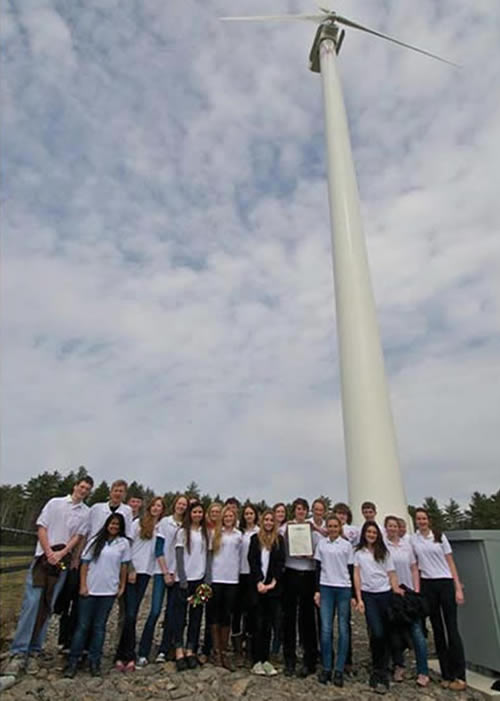
(Front left to right): Will Conover (senior), Lila Ohland (Junior), Maya Sosland (Junior), Caroline Webb (Junior abroad), Shayna Cohen (Frosh in college), Jake Klingelhofer (Frosh in college), Chelsea Hunter (Senior), Anna Mynick (Senior)
(Back left to right): Eliot Grigo (Senior), Sean Beacham (Junior), Eliza Carter (junior), Anabel Carter (Junior), Cole Ellison (senior), Sarah Haselton (Junior Abroad), Thatcher Chamberlin (Sophomore). Abby Blakeley (Junior), Allie Heckerd (Frosh in college), Emma Conover (Frosh in college), Chris Borch (Frosh in college), Adam Throne (sophomore), Emma Blakeley (Frosh in college), Keith Rose (Advisor), Mary Caitlin Parks (Frosh in college)
Missing: Margo Murphy (advisor)
Special Thanks
Our Vocalist
Danny Rodriguez
Danny Rodriguez has worked at the Environmental Protection Agency for twelve years. Working at the EPA, while in high school and college, afforded Danny the value of understanding the important work of this Agency in protecting the environment. His efforts in protecting the environment began at the age of fifteen where he worked with a team of environmentally-focused youths in presenting ideas to community leaders for vacant lots, including brownfields sites, in this environmental justice community. Since, Danny has continued to work on efforts in protecting our environment. During his early teenage years, Danny began to sing in his family's place of worship and has, ever since, continued to learn the value of singing and music.
Our Pianist
Nancy Zhou
Nancy Zhou has been part of the Environmental Protection Agency for five years and has gained very valuable and memorable experiences. She has been playing classical piano for most of her life but could not imagine it being as colorful without jazz piano. She is as passionate about music as she is with culinary arts and is most happy when being able to connect different individuals to all the memorable food, entertainment and timeless history Boston has to offer.

Rivanna Natural Designs, Inc.
Green awards for your next green event
At Rivanna Natural Designs, we believe products that express gratitude, reward performance, and celebrate excellence should harm neither the planet nor the people who create, purchase, or receive them. We are honored to create these awards for the EPA's New England Region. The glass for the awards comes from a 100-year-old family-owned artisan glass company in West Virginia that transforms crushed bottle glass. The ebony glass awards are smooth, rich, and sandblast flawlessly. It's difficult to believe they are made from glass dust that would otherwise be considered hazardous waste.
The central principal of our business is that, in its every aspect, our work must reflect our strong obligation to our clients, coworkers, community, and environment. A certified woman-owned business and B Corporation, we participate in a number of voluntary programs aimed at minimizing our environmental footprint, including EPA’s Green Power Partnership and EnergySTAR™ for Small Business.

Today's Awards
Today’s Merit Award frames were made from naturally sustainable bamboo, with recycled paper.
